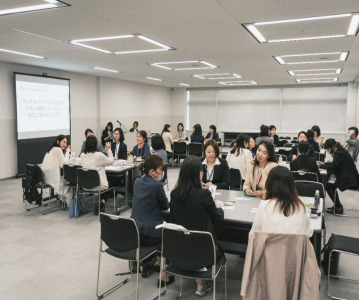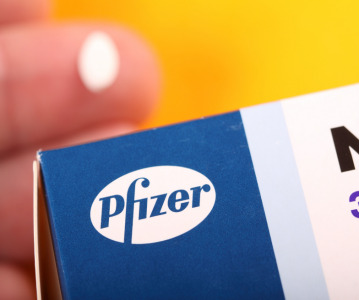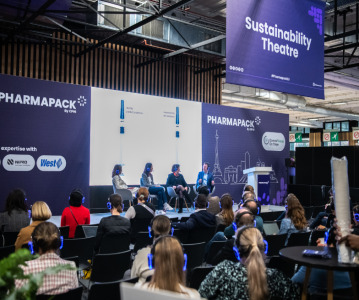CPHI Panel Members Call for a Radical Shift in Pharma’s Model to Reduce Manufacturing Cost and Increase Innovation

CPHI Worldwide, part of UBM Live’s pharmaceutical portfolio, has announced the findings of part one of its second annual report. Three world-renowned experts — Vijay Shah Executive Director & COO of Piramal Enterprises, Dilip Shah CEO of Vision Consulting and Girish Malhotra President of EPCOT International — each forecast their predictions for the industry, advocating radical changes that will revolutionise production processes and profits.
Ideas to help make development and manufacturing more efficient, along with new technologies suh as green chemistry were identified by the experts as solutions that will reduce costs and improve current manufacturing processes and environmental impact.
A major point of convergence in theme across their three perspectives is that pharma, in its present form, needs an evolutionary approach to remain sustainable in the longer term and open up access to drugs to more of the world’s population. Girish Malhotra argues that for too long the industry has relied on selling its drugs entirely to the developed world and has, as such, not been actively focused on delivering increased process innovations that would bring cost savings and increased profits, whilst opening up new markets in the developing world. Similarly, Dilip Shah believes that the current model of strictly implementing IPR in all markets has perversely resulted in diluting innovation across the industry. Dilip believes reducing onerous IPR requirements in developing economies — challenges he argues developed economies did not have to face at a similar stage in their development — can increase innovation. In contrast, Malhotra believes Quality by Design (QbD) and a ‘process centric’ approach need to be embedded within the manufacturing and development process from concept right the way through commercialisation, as this would provide an environment where new innovations were encouraged and continually sought.
Dilip added: “The danger is that without change during the next 5 years pharmaceuticals will continue to increase in price, but only demonstrate limited increases in efficacy.” He is advocating a globally co-ordinated approach whereby there is a clear differentiation between developed and developing countries, with the latter taking a looser approach to IPR implementation.
Similarly Malhotra states that the current regulatory centric approach actively discourages innovation. However, he envisages manufacturing process savings could be as high 20–25% globally and would, therefore, open up new markets if the industry is willing to evolve. Universal adoption of QbD would optimise process efficiencies, improving product quality whilst simultaneously lowering costs, meaning that ultimately pharma will deliver more revenue by selling to more of the world’s population.
In keeping with a more sustainable and global approach to drugs manufacture Piramal’s Vijay Shah prophesied green chemistry as another new method set to reduce costs and his research indicates this sector will grow rapidly to reach a value of $100 billion by 2020. Moreover, he is imploring governments globally to support this by reducing regulation and increasing incentives. Already he has envisaged a new global standard, which he has coined ‘Green Chemistry by Design’ (GCbD) and should be ingrained within the R&D stage. CRAMS providers will during the next few years begin to implement this process to drive efficiency savings, which if fully delivered by all types of manufacturers would save the industry $65 billion by 2020.
“Already we are seeing Big Pharma looking increasingly to explore greener ways of working and the manufacturing process is a natural progression of this trend. Technologies such as catalysis, flow chemistry, and parallel screening are revolutionising process research, by creating efficiencies and cost savings,” commented Vijay Shah.
CPHI will release the full annual report findings, which include seven additional expert articles, at CPHI Worldwide 2014, taking place 7–9 October at Paris Nord Villepinte, France.
Chris Kilbee, Group Director Pharma at CPHI: “This year CPHI Worldwide celebrates 25 years as the leading pharma industry conference and our panel of experts are instrumental in helping achieve a brighter future for the industry. Not only have they foreseen structural changes that will increase profits, but also changes that will open up increased access to drugs and help make the industry and its processes become far more sustainable and efficient. The full findings of the CPHI annual report will be announced during the Worldwide show (6–9 October) in Paris and is a yet further example of how CPHI as a company is actively providing content, industry insights, as well as building the essential business relationships to sustain the industry. The pharma community increasingly uses CPHI as its go to resource for both helping them achieve new business wins, and now, examining business insights holistically to see how the sector is changing and growing.”
Related News
-
News Women in Pharma: Career Design for Women
Our monthly Women in Pharma series highlights the influential lives and works of impactful women working across the pharmaceutical industry, and how the industry can work towards making the healthcare industry and workplace more equitable and inclusive... -
News Pfizer may shift production back to US under Trump pharma tariffs
At the 45th TD Cowen annual healthcare conference in Boston, USA, Pfizer CEO Albert Bourla outlined the potential for Pfizer to shift its overseas drug manufacturing back to the US as pharmaceutical industry players weigh their options against Presiden... -
News Women in Pharma: Connecting accessible pharma packaging to patients – a Pharmapack Special
Throughout our Women in Pharma series, we aim to highlight how CPHI events encourage discussions around diversity, equity, and inclusion initiatives in the pharmaceutical industry. -
News CPHI Podcast Series: Packaging expert perspectives at Pharmapack 2025
This month's podcast episode sounds a little different, covering the latest event in Paris – Pharmapack 2025. Digital Editor Lucy Chard speaks to several experts direct from the floor of the show, bringing you right in on the action.&nbs... -
News Closing 2024 with Editors' picks of top articles from the past year
Coming to the end of 2024 and it’s certainly been a busy year, for CPHI and for the rest of the pharmaceutical and healthcare industry. Topics of conversation throughout the last 12 months have been varied, touching on the technical, to the polit... -
News SCHOTT Pharma’s sustainable journey with CPHI
Sustainability is of paramount importance in the pharmaceutical industry. See how a recent partnership between CPHI and SCHOTT Pharma has helped to highlight and accelerate their sustainability journey to reach global goals. -
News CPHI Podcast Series: Investing in a vision for the future of life sciences
In this episode Lucy Chard is joined by Rajiv Khatau to discuss the importance of looking into new therapeutic areas and some of the more niche areas of pharmaceuticals, and investing in the future of the industry. -
News Lessons from CPHI Milan 2024: Sunny Intervals for Pharma Manufacturing?
As the 2024 CPHI conference wrapped up in Milan, we caught up with L.E.K. Consulting – a global strategy consulting firm with deep expertise in pharma manufacturing – to discuss evolving market perspectives and business outlook.
Recently Visited
Position your company at the heart of the global Pharma industry with a CPHI Online membership
-
Your products and solutions visible to thousands of visitors within the largest Pharma marketplace
-
Generate high-quality, engaged leads for your business, all year round
-
Promote your business as the industry’s thought-leader by hosting your reports, brochures and videos within your profile
-
Your company’s profile boosted at all participating CPHI events
-
An easy-to-use platform with a detailed dashboard showing your leads and performance







